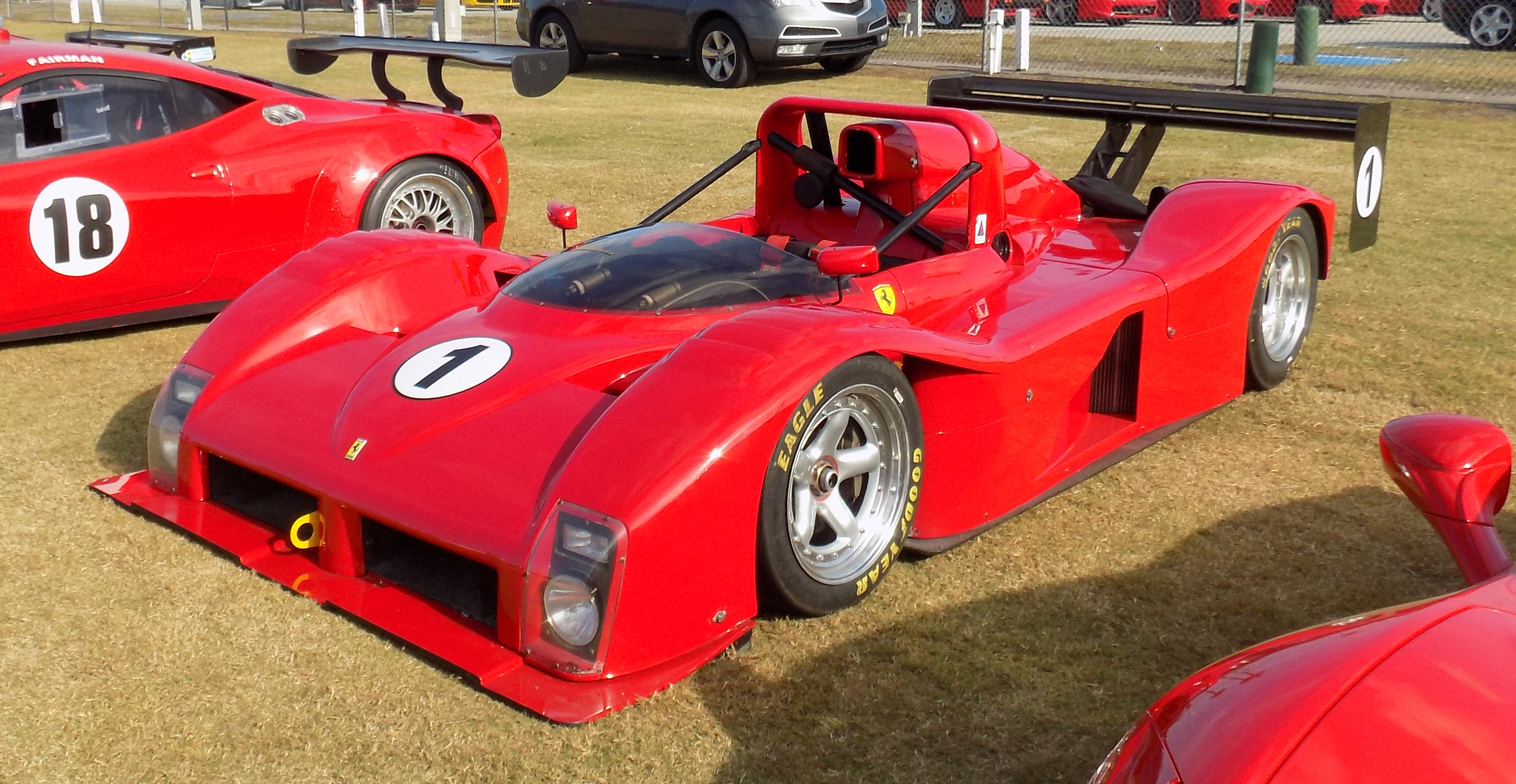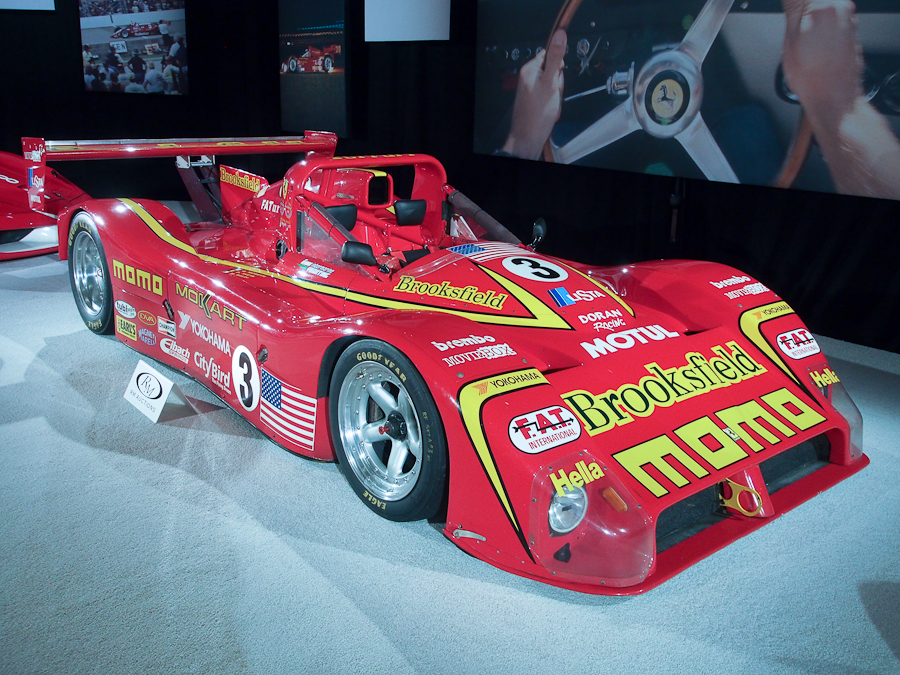333 SP

Jim Weed
Volume 50 Issue 21
Nov 9, 2025
Sports Cars is how Ferrari began and created the legend. The return to the World Sports Car series began with an idea and a collaboration. The 333 SP was nearly perfect from the very first race. Between 1994 and 2001 it dominated tracks around the world.
Ferrari made its name in sports car racing. In the early days, gentleman racing came in many forms.
Rallies like the Tour de France and Giro di Sicilia allowed drivers to compete on public roads. Of course, the Mille Miglia was another event drivers could test their mettle against factory teams, and the clock.
There were also hill climbs. Here the goal was time. How quickly could a particular mountain be conquered.
Ferrari was able to build automobiles that were not only quick, but strong also. Comparatively, the handling and brakes were adequate against the competing cars of the day. The Ferrari secret was the strength and power of the twelve-cylinder engine.
It was this reliability that helped to create the Ferrari legend.
Ferrari’s first sports cars were the 166 MM. Light and agile, they helped the fledgling factory make its mark on the racing world.
Later the 500 Mondial and 750 Monza, with their four-cylinder engines, also gained many victories in customers’ hands.
The same could be said about the 250 engines that came in many different forms and powered many different models to victory.
The 250 Testa Rossa and the 250 GT LWB Berlinetta gave way to the 250 GT SWB Berlinetta and the mighty 250 GTO.
This era of sports car racing allowed customers to purchase a car and directly go racing with it. By the early 1960s the sophistication of racing soon was to leave the ‘gentleman’ racer behind.
The 250 GTO was realistically the end of the dual-purpose Ferrari. The 250 LM brought a new level of technology to the track.
The competition was growing stronger with manufacturers bringing purpose-built racing cars and squeezing out the gentleman racer.
Ferrari had changed also. Production cars were taking on more resources and the battle with Ford made it even more difficult to split time and money between sports cars and Ferrari’s true love, Formula One.
Through this decline Ferrari made a few half-hearted attempts to stay in the sports car game with the 512 S and M and the 312PB series cars. While these were successful in their own right, it was certainly not a whole-company effort.
The same could be said about the Daytona and 512 BB/LM cars. These were mainly supplied and developed through privateer teams and not full factory support.
As a privateer effort, these cars did keep Ferrari in the sports car game and while somewhat successful neither of these models dominated.
By the 1980s the 308 GTB was modified by Michelotto into a decent rally car. While the Michelotto 308 enjoyed much success, these were built outside of the factory. By 1985 Ferrari sports cars were a relic of the past.
In Formula One, the rules had changed with the banning of turbocharged engines. Ferrari developed a normally aspirated V-12 in 1989. This engine would be used during the next few years but as a Formula One engine it was not to be competitive.
Ferrari moved to a V-10 engine in 1996. This engine did power Ferrari to five championships with Michael Schumacher driving between 2000 to 2004.
IMSA as a racing series survived several ups and downs since its inception. One series was the GTP category that was heavily contested by several manufacturers. The original intent was to provide a series for both manufacturers and privateers to compete.
After Porsche stopped competing and the other manufacturers left the series, the last race was at Phoenix in 1993.
In a revitalization, a new series was created: the World Sports Car (WSC). The cars would be open top, flat-bottom chassis using a production engine. The emphasis would be on endurance, and that is exactly what Ferrari was good at.
Gianpiero Moretti came to Ferrari to pitch the idea of returning to endurance racing. Something would have to be built quickly. The 1994 season was right around the corner.
Piero Ferrari was approached and since he was the head of Ferrari Engineering Division he oversaw special projects. What could be more special than creating the first endurance sports car since the early 1980s?

The chassis was Formula One technology. Carbon fiber composite and aluminum honeycomb panels were used to create the tub. Rules required a two-person cockpit, so it became a larger version of the F1 cars.
The front would have horizontal dampers attached to a pushrod suspension. The independent rear suspension would also have horizontal dampers and the whole would be directly attached to the transverse gearbox.
The transmission was bolted to the engine which in turn was bolted directly to the tub assembly. This setup was not only light but strong.
The engine was a derivative of the unsuccessful V-12 Formula One engine that was also being developed for the F50 project.
Since the Formula One engine was a 3.5-liter V-12 it was enlarged to meet the 4-liter specification for the World Sports Car series.
The engine was enlarged again for the F50 project to 4.7-liters and since the development of the F50 was ongoing, the engine for the 333 SP was allowed to be considered a ‘production’ engine.

To move the project forward, a collaboration with Dallara was created to manage the project. The first five chassis were completed by Ferrari and then the project was moved to Dallara for completion. Dallara made the next ten chassis.
In 1997 the project was moved to Michelotto who completed another twenty-five chassis. The total number of chassis produced between Ferrari, Dallara and Michelotto was forty, with Michelotto producing the majority of 333 SPs.
In early 1994 the first 333 SP showed up at the Daytona 24-hour race. Not to compete but to display Ferrari’s new commitment to compete in the World Sports Car Championship.
Shortly thereafter it was unveiled at the Cavallino Classic. It was small and low. The body looked like it was shrink-wrapped around all the important components.
Beautiful in a purposeful way, the 65-degree V-12 put out over 650 horsepower. The design of all the components was driven by one overreaching edict: endurance. Instead of ultimate lightness, the design criteria was strength and durability.
Ferrari had certainly completed their homework when the first outing of the 333 SP at Road Atlanta resulted in a one-two-five finish. This domination would continue throughout the rest of the season.
By the end of the 1994 season of WSC, the 333 SP had racked up five wins with three different teams. Wins at Road Atlanta, Lime Rock, Watkins Glen, Indianapolis and Laguna Seca were not enough to clinch the championship, but the car proved to be fast and reliable.

The 333 SP continued to rack up victories in WSC for 1995, and in other series around the world through 2001. The strength and reliability of the 333 SP was proven by the longevity of its racing career.
The 333 SP was conceived to be a customer racing car. The price was reported to be 1 million including one spare engine and other spares for the car. While not a money maker for Ferrari, it was designed to be a break-even project.
Ferrari raided its parts bins and repurposed a powerplant in order to keep costs down. They also farmed out the work to Dallara and Michelotto to save resources. In the end it was a brilliant package that brought Ferrari back into sports car racing.
It proved there could be a close collaboration with the factory and privateer teams. The 348 and 355 Challenge series also helped. By the time the 360 Modena came there were now teams that could compete at tracks around the world.
Today Ferrari is competitive with the 488 and 296 in endurance events. To prove Ferrari has not lost its edge it created the 499P.
The 499P followed in the same footsteps as the 333 SP by winning right out of the box. Clearly, Ferrari knows how to win, just as it has been since the beginning with the 166 MM.
With only forty 333 SPs made they don’t come up for sale often. The initial price was quoted at $1 million; values have risen since their debut in 1994.
In 2013 one was sold at $1.37 million. One year later another was sold, also at Monterey for $2.4 million.
Last year another was sold again at Monterey for $5.1 million. Recently, October 11th, 2025, RM sold one at The Tailored For Speed Collection auction for $6.5 million.

Rick Carey photo
Clearly these successful sports racers are desirable.
